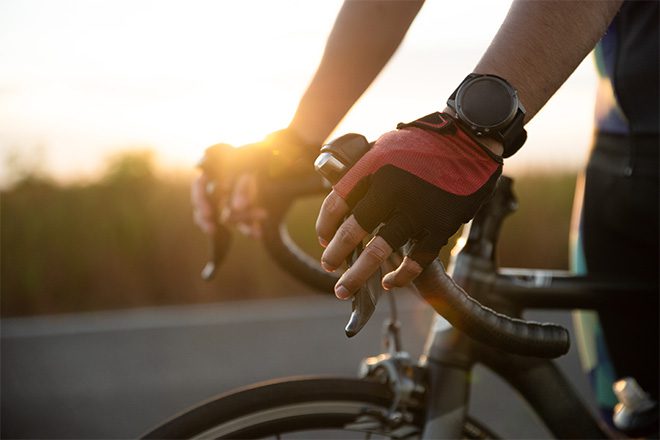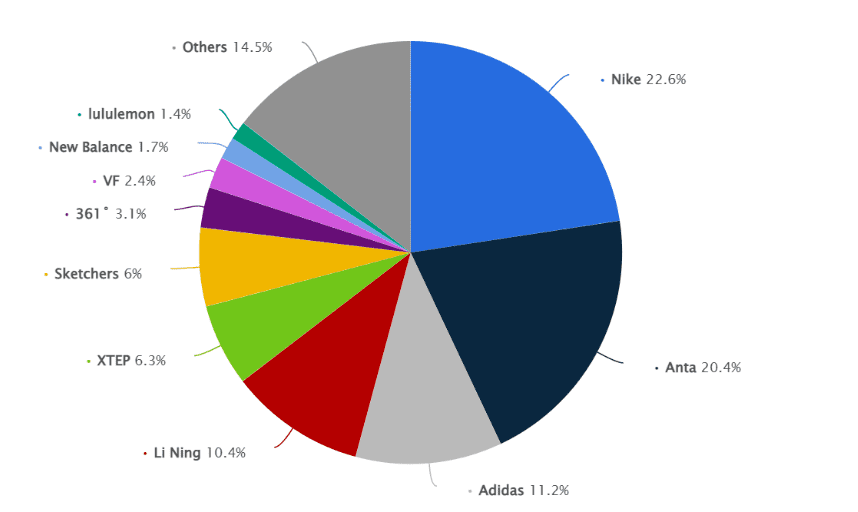Subscribe
Sign up for timely perspectives delivered to your inbox.
As China's sportswear market skyrockets, Mike Kerley and Sat Duhra, Portfolio Managers of Henderson Far East Income, have seized this golden opportunity by investing in two of China's sportswear frontrunners, Li Ning and Anta.

China’s sportswear market has witnessed remarkable growth in recent years, fuelled by various factors, including an emerging fitness culture, rising disposable income, and strong government support for the sports industry. In addition, a heightened awareness of obesity and lifestyle-related diseases has led many Chinese consumers to prioritise regular exercise and adopt healthier lifestyles. This has increased participation in a wide array of sports, ranging from traditional favourites like badminton and table tennis to basketball, football, cycling, and swimming, consequently driving a diverse demand for sportswear.
The nation’s rapid economic development and urbanisation have significantly transformed the lifestyles and aspirations of the Chinese populace. As urbanisation continues, more people are moving to cities with greater access to gyms, sports facilities, and fitness classes. Simultaneously, an expanding middle class with higher disposable income and a growing emphasis on health and fitness have spurred an unprecedented demand for sportswear.
Recognising the importance of a healthy population, the Chinese government has launched initiatives such as the National Fitness Plan, support for professional sports, and hosting the 2022 Winter Olympics, further boosting interest in sports and fitness nationwide. As sports participation and the shift towards healthier lifestyles have gathered pace, so too has the demand for sportswear.
In 2021, China’s sportswear retail sales soared to RMB371.8 billion (US$51.9 billion), accounting for 13.4% of the country’s apparel market. And this momentum is set to continue, with the Chinese sportswear market projected to grow at an impressive compound annual growth rate (CAGR) of 10% between 2021 and 2026.i While international brands like Nike and Adidas have traditionally dominated the sportswear market, recent years have seen an increasing shift toward local brands that embody Chinese cultural traditions and rising national pride.
The ‘Guochao,’ or ‘national wave,’ has been one of the driving forces behind this shift toward domestic brands. As reported by Bloomberg, the trend is quickly gaining traction among young Chinese consumers, especially the 270 million-strong Gen-Z cohort. These young consumers are redefining the traditional stigmas associated with Chinese goods; the ‘Made in China’ label is now seen as a badge of honour, with local brands producing high-quality products tailored explicitly for Chinese consumers.
And it’s not just traditional sportswear that has seen increased demand. China’s Gen Z and Millennials are also placing an emphasis on style and luxury, which has resulted in the proliferation of athleisure (a mix of fashion and sports apparel). For many Chinese millennials, fitness is also a social activity, they want to make friends in the gym or be part of certain communities. As a result, consumers now want sportswear that is functional, versatile, and even more importantly attractive – something which many Chinese brands have leveraged.
This shift has enabled Chinese sportswear giants like Li Ning and Anta Sports to expand their market share. In 2022, Nike led the Chinese sportswear market with a 22.6% share, while local brand Anta Sports overtook Adidas (11.2%) to secure second place with approximately 20.4% of the market share. Meanwhile, Li Ning increased its market share to 10.4%.ii

Source: Breakdown of the sportswear market in China in 2022 by brand. Statista 2022
Li Ning, founded by the eponymous Olympic gold medallist, has swiftly emerged as one of China’s foremost sportswear brands, rivalling international behemoths like Nike and Adidas. The company offers an extensive portfolio of products, encompassing athletic footwear, apparel, and accessories. It also sponsors numerous high-profile sports events and athletes, further cementing its reputation. Crucially, Li Ning has adeptly tapped into China’s burgeoning national pride, striking a chord with the increasingly affluent and aspirational Chinese consumer base.
The company’s financial results over recent years reflect its success in navigating the competitive landscape. In 2022, Li Ning’s revenues climbed by 14.3% year-on-year (yoy), reaching RMB25,803 million, up from RMB22,572 million the previous year. Moreover, despite a 4.6 percentage point dip in the gross profit margin to 48.4%, the net profit margin held steady at a robust 15.7%.iii Li Ning’s impressive performance can be attributed to its commitment to product innovation, proactive marketing strategies, and an in-depth comprehension of the local market, all of which have positioned it as a key player in China’s booming sportswear industry.
Anta, a prominent homegrown Chinese sportswear brand, has made its presence felt in the industry by emphasising design, quality, and performance. The company has consistently exhibited strong financial performance, positioning itself to capitalise on China’s burgeoning sportswear market. In a strategic move, Anta acquired the rights to the Fila brand in China, Hong Kong, and Macau, enabling it to diversify its portfolio and attract a wider clientele. Furthermore, the company has invested in
international brands like Amer Sports, the owner of well-known names such as Salomon, Arc’teryx, and Wilson, bolstering its standing in the market.
Despite pandemic-related challenges, Anta reported impressive financial results, showcasing its resilience and potential as a rewarding long-term investment. In 2022, the company’s revenues rose 8.8% year-on-year to RMB 53.7 billion. Furthermore, with the successful marketing campaign during the Beijing Winter Olympics and the implementation of the “Lead to Win” strategies, the Anta brand further enhanced its brand equity and increased contribution from high-end products and DTC business, driving revenue to increase by 15.5% yoy to RMB 27.72 billion.iv These figures underscore Anta’s commitment to design, quality, and performance and its capacity to appeal to a diverse customer base through strategic acquisitions and partnerships. This strong performance is also mirrored in the company’s share price, further highlighting its growth potential and investment appeal.
Our investments in Li Ning and Anta are a testament to the growing potential of the Chinese sportswear market. The recent earnings reports from Li Ning and Anta underscore the growth potential of China’s sportswear market and validate our investments in these companies. As the demand for sportswear continues to rise in China, Li Ning and Anta are well-positioned to capitalise on the trend, offering attractive returns for the trust and its shareholders. In addition, the solid financial performance of both companies is a testament to their resilience, adaptability, and keen understanding of the evolving Chinese market, further solidifying their status as compelling investment opportunities.